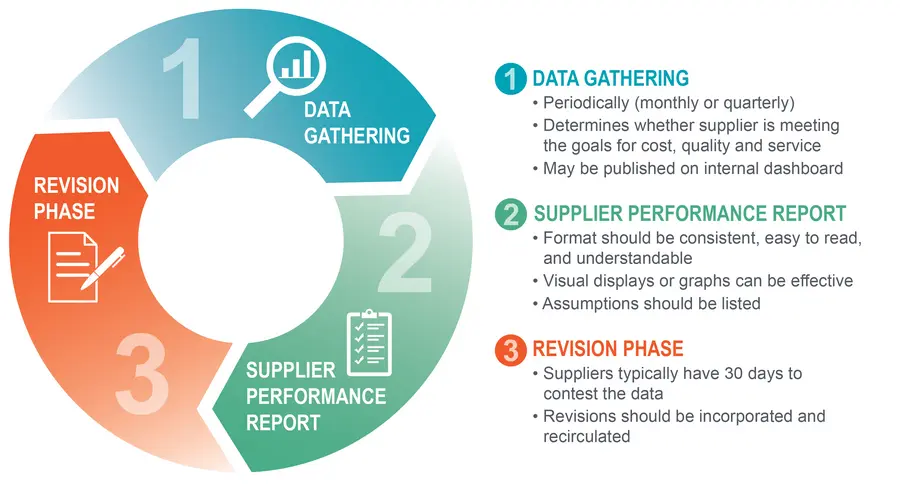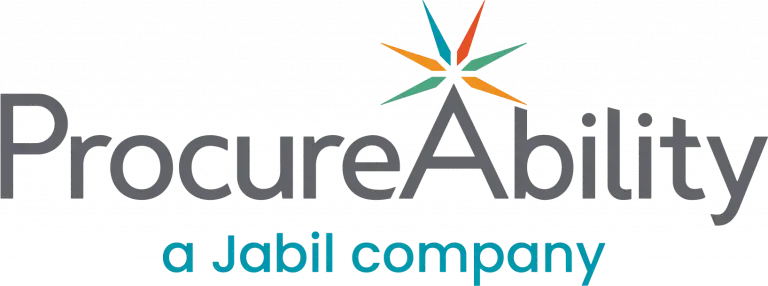
Procurement professionals know that work doesn’t stop when a contract is signed—in fact, that’s often when it truly begins. Because supplier relationships evolve over time, teams must actively manage performance through Supplier Relationship Management (SRM) to sustain value for both parties.
Strong performance management not only ensures suppliers meet expectations but also helps them deliver consistent value and remain aligned with your organization’s broader procurement strategy. Otherwise, even the most promising partnerships can lose momentum or fail to deliver results.
This article explores the key elements of supplier performance reporting and outlines three types of supplier relationships your team likely manages. By applying these insights, procurement can drive stronger outcomes through strategic segmentation and proactive performance oversight.
Supplier Performance Reporting Process
Supplier performance reporting works as a two-way communication cycle that highlights developments, identifies opportunities, and addresses areas for improvement across cost, quality, and service. To succeed, the process depends on timely communication, measurable KPIs, and mutually beneficial incentives. Teams typically follow three phases:
- Data Gathering Phase: First, collect and analyze supplier performance data objectively, tracking metrics against contract KPIs and goals. In addition, ensure data quality and consistency to generate actionable insights.
- Supplier Performance Report: Next, consolidate the data into a clear report that tells the story behind the numbers. Reports can range from a one-page summary of key items to a robust dashboard with filters and visualizations. Importantly, maintain a consistent format and cadence so teams can compare results over time.
- Revision and Correction Phase: Finally, share the report with suppliers, giving them an opportunity to review results and provide feedback. This phase ensures that suppliers can identify errors or omissions—such as missing regional data—before finalizing the report.
Above all, keep the process simple, repeatable, and easy to understand so that both teams stay focused on improvement—not administration.

An Example of the Supplier Performance Reporting Process
Imagine your procurement team manages a key LTL Freight Supplier responsible for most ground transportation over a two-year contract.
Key KPI: On-Time Performance (OTP), defined as the percentage of packages that arrive on schedule. The contract sets a target of 95% OTP per quarter.
- Data Gathering Phase: The team pulls weekly data from the Transportation Management System (TMS) using an automated SQL script. Additionally, they periodically validate the data to catch omissions or errors.
- Supplier Performance Report: Weekly performance feeds a BI dashboard showing OTP by week and region. Whenever the metric drops below 95%, graphs flash red for visibility.
- Revision and Correction Phase: Suppliers access the dashboard in real time and have 30 days to ask questions or request corrections. As a result, the supplier stays motivated to maintain high performance, and OTP has improved noticeably.
Types of Supplier Relationships
Not every supplier requires the same level of engagement. Therefore, teams tailor collaboration based on the supplier’s criticality and potential for mutual improvement. Procurement generally manages three types of relationships:
- Tactical Relationships (Mail Carrier Model): Transactional suppliers operate independently, like a daily mail carrier. Consequently, they require minimal oversight—typically annual reviews or standard reports—and support non-critical categories with low disruption risk.
- Collaborative Supplier Relationships (Neighbor Relationships): Collaborative suppliers resemble helpful neighbors. In these relationships, teams coordinate periodically, share feedback, and support mutual goals. They involve scheduled performance reviews, moderate senior management involvement, and basic continuous improvement objectives. Moreover, both sides can suggest operational enhancements or efficiency gains.
- Strategic Suppliers (Roommate Relationships): Strategic suppliers are like roommates—highly interdependent, in constant communication, and invested in shared success. These partnerships typically support critical categories such as logistics, IT, or manufacturing inputs.
Strategic relationships demand frequent performance reporting, joint problem-solving, and senior management engagement. Both organizations work together to identify improvement opportunities, adjust contract terms, and drive mutual gains in cost, quality, and service. The LTL Freight example above illustrates this level of collaboration.
Building Stronger Supplier Partnerships
Ultimately, procurement professionals must manage supplier relationships throughout their lifecycle. By participating in proactive Supplier Relationship Management teams improve cost, quality, and service while showing suppliers that the organization values them. Over time, this approach generates measurable benefits, strengthens performance, and fosters trust that lasts across multiple projects.




